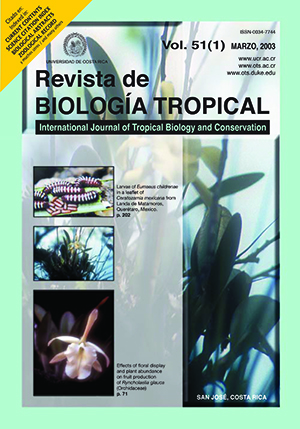Abstract
Flowering plant density can increase number of visits and fruit set in multi-flowering plants, however this aspect has not been studied on few flower species. We studied the effects of individual floral display and plant density on the fruit production of the epiphytic, moth-pollinated orchid, Ryncholaelia glauca, in an oak forest of Chavarrillo, Veracruz, Mexico. Species is non-autogamous, and produced one flower per flowering shoot each flowering season. We hypothesized that orchids with more flowering shoots and those on trees with clumps of conspecific should develop more fruits than isolated ones. R. glauca population flowers synchronously, and individual flowers last up to 18 days, with flowers closing rapidly after pollination. Individuals produced few flowers per year, although some plants developed flowers in both seasons and fewer of them developed fruits both years. There was no relationship between flower number per orchid, or per host tree, with the number of fruits developed per plant. Host trees with flowering and fruiting orchids were randomly dispersed and the pattern of distribution of flowering and fruiting plants was not related. Apparently, pollinators visit the flowers randomly, with no evidence of density dependence. The fruit set of R. glauca was as low as fruit set of multi-flowered orchids moth pollinated, suggesting that fruit set on moth pollinated orchids could be independent of the number of flowers displayed.

This work is licensed under a Creative Commons Attribution 4.0 International License.
Copyright (c) 2003 Revista de Biología Tropical
Downloads
Download data is not yet available.

